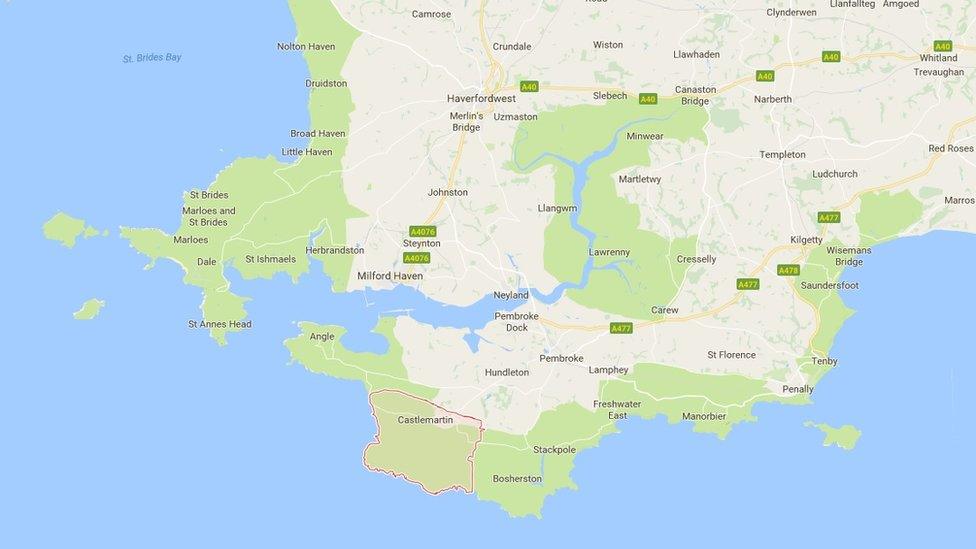Helicopter drawn on beach highlights MoD sites danger
- Published
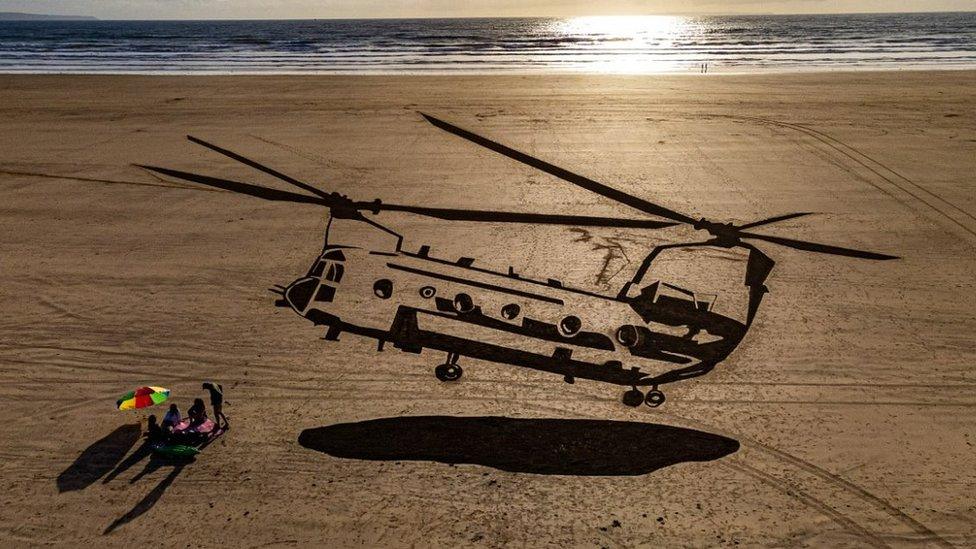
The Chinook has been drawn on Saunton Sands beach in Devon
A 100m (330ft) long military helicopter has been drawn on a Devon beach to highlight the dangers of armed forces sites that are shared with the public.
The Chinook has been drawn on Saunton Sands beach, near Braunton.
The Ministry of Defence (MoD) said it was urging holidaymakers and locals to check firing and training times on any of its UK sites they can access.
People could encounter training, live firing, unexploded ordnance and fast-moving military vehicles, it warned.
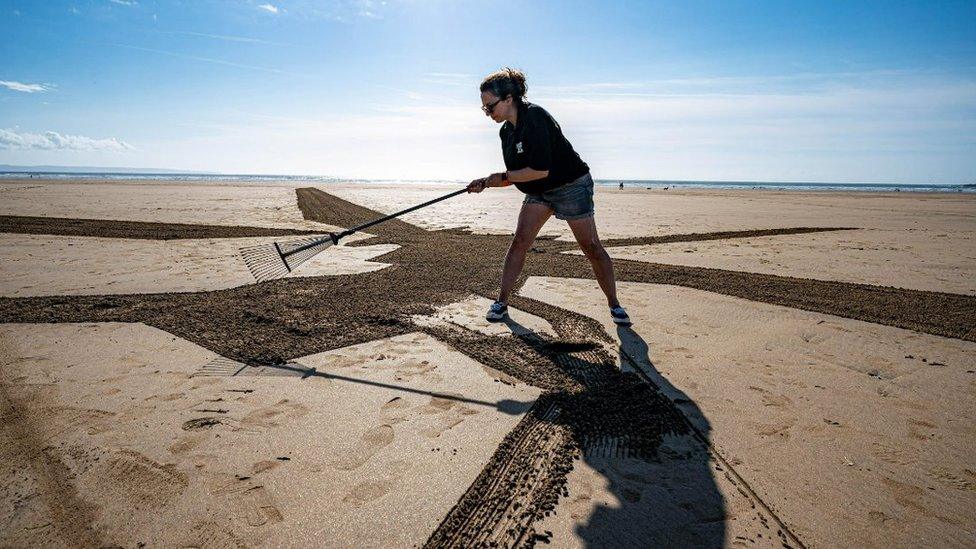
The drawing was created on Saunton Sands because it is "an area steeped in military history"
The MoD's Defence Infrastructure Organisation (DIO) said its Respect the Range campaign was highlighting a number of sites with shared public access, including its Braunton Burrows training estate next to Saunton Sands.
It said there were "very real risks they face when entering shared land used by the MOD for training", including a number of popular coastal locations.
Other sites being highlighted include:
Aldershot, Hampshire
Barry Buddon, Carnoustie, Scotland
Donna Nook, Lincolnshire
Holbeach, Lincolnshire
Lulworth, Dorset
Lydd and Hythe, Kent
Salisbury Plain, Wiltshire
It said precautions people could take included checking military firing and training times, sticking to public access routes, observing safety information including flags, fences, signs and by-laws; and reporting any ordnance they came across but not touching it.
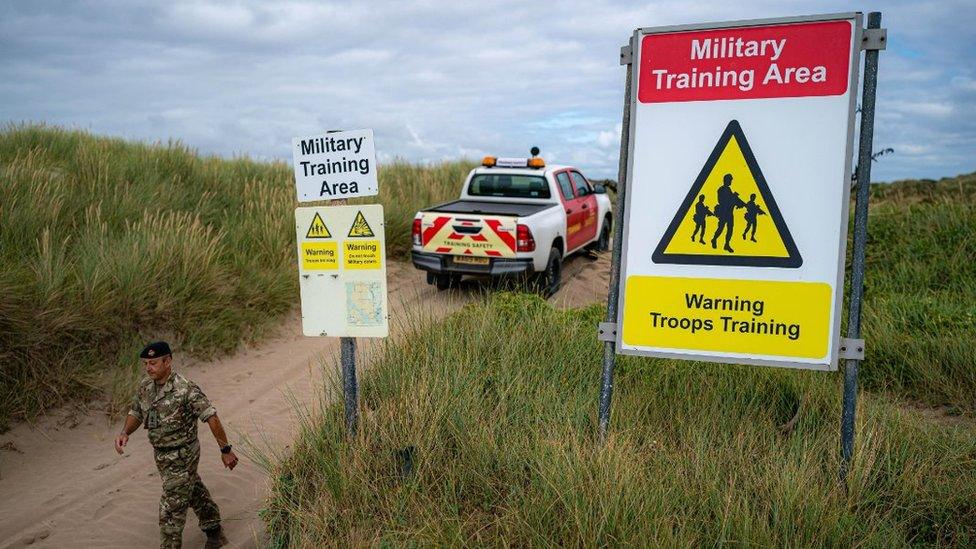
Precautions people can take before going on military training areas including checking firing times and sticking to public access routes
People accessing military training areas when it was not safe to do so "not only places visitors in harm's way, but can also put service personnel at risk", the MoD said.
Brigadier Jonathan Bartholomew, of the DIO, said: "These beauty spots are shared land, where families, tourists and locals spend time. But it's also where our armed forces practise live-fire training, so it can go from tranquil to treacherous by the hour, 24 hours a day.
"It's key that we work together to share these spaces with respect and consideration."

Follow BBC News South West on Twitter, external, Facebook, external and Instagram, external. Send your story ideas to spotlight@bbc.co.uk.
- Published8 July 2022

- Published10 July 2020
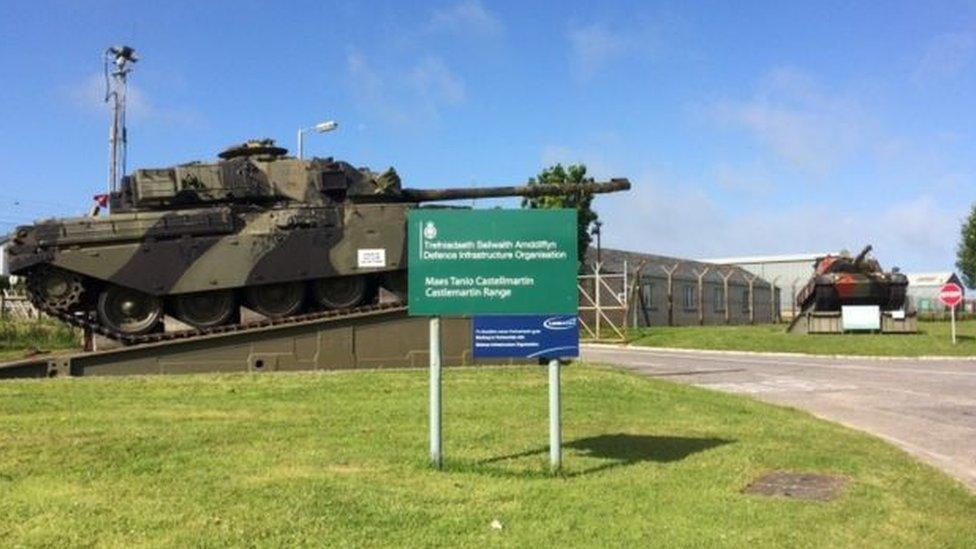
- Published15 June 2017
